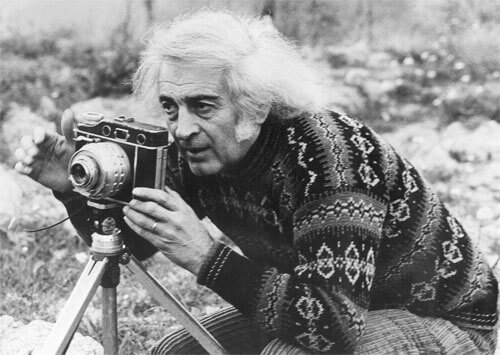Giacomelli was a self-taught photographer. At 13, he left high school, began working as a typesetter and spent his weekends painting. After the horrors of World War II, he turned to the more immediate medium of photography. He wandered the streets and fields of post-war Italy, inspired by the gritty Neo-Realist films of Vittorio De Sica and Roberto Rossellini, and influenced by the renewed Italian photographer Giuseppe Cavalli, and developed a style characterized by bold, stylized compositions and stark contrasts.
Source: Wikipedia
With the death of Mario Giacomelli (1925-2000) Europe lost one of its most talented photographers. Trained initially as a typographer, his early interest in graphic effect became a key part of his later photographic work. Winner of numerous medals and prizes, he acheived international status through numerous exhibitions throughout Europe, America and Japan. His highly personal, artistically atmospheric visual style demonstrates a life-long preoccupation with landscapes that emphasize linear, abstact patterns, rural townscapes, streetscenes and portraits of everyday Italian life. His work displays a profound understanding of the country and its people and a mastery of form and effect that make his photographs imaginatve works in their own right.
Source: Peter Fetterman Gallery

